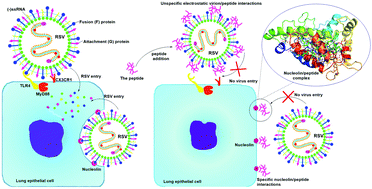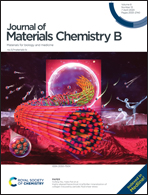Linear and dendrimeric antiviral peptides: design, chemical synthesis and activity against human respiratory syncytial virus†
Abstract
Respiratory syncytial virus (RSV) is one of the most common viral pathogens. It is especially dangerous for newborns and young children. In some cases it could lead to severe bronchiolitis, pneumonia with hospitalization or even a lethal outcome. Despite decades of investigation of RSV biology, effective and safe therapeutics are still under development. Certain natural peptides have been found to exhibit antiviral activity against respiratory viruses, but their implementation is limited by low stability in biological media. One of the current approaches to enhance the peptide therapeutic opportunities is chemical synthesis of peptide dendrimers with hyperbranched structures. Taking into account the recent data of bioactive cationic and helical regions of natural peptides and the structure features of nucleolin identified as an RSV cellular receptor, the main goal of this study was to design relatively short linear and dendrimeric cationic peptides and to test their antiviral activity against RSV. As a result 3 linear cationic peptides and 4 peptide dendrimers were synthesized and compared with known LL-37 (cathelicidin family) and anti-F0 monoclonal antibodies in terms of cytotoxicity and antiviral activity. Their affinity to the supposed molecular target – nucleolin (C23) – was estimated in silico by molecular docking analysis. Four synthesized peptides demonstrated a cytotoxic effect, two of them were even more cytotoxic than LL-37, which could be explained by a combination of a high amount of positive charge and amphipathicity. Contrariwise, non-hydrophobic dendrimer peptides did not exhibit cytotoxicity in mammalian cells in the studied concentration range. Two of the seven synthesized peptides, LTP (dendrimer) and SA-35 (linear), used in this study had a stronger antiviral effect than natural peptide LL-37, and three others showed slightly lower activity than anti-F0 monoclonal antibodies. The data obtained in this study suggest that evenly distributed positive charge, and low or medium amphipathicity play a key role in the antiviral activity of the studied peptides. Moreover, the calculated free energy values of the peptide/nucleolin complex for the most active peptides supported the idea that the peptide ability of nucleolin interaction promotes the anti-RSV properties of the molecules.



 Please wait while we load your content...
Please wait while we load your content...